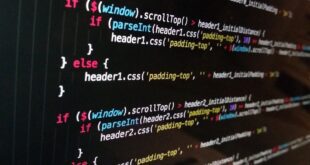Get ready to Master Git: A Comprehensive Guide for Developers
Are you tired of managing your code manually in a dishevelled manner? Do you want to streamline code collaboration with your team? If your answer is yes, here’s a solution for you – Git. Git is a source code versioning tool that enables developers to work collaboratively and manage code effortlessly. In this article, we’ll take you through a step-by-step guide for mastering Git.
Hone your command-line skills
To start using Git, you need to have basic command-line skills. Don’t be intimidated if you are not familiar with the terminal. Just take a deep breath and get started. You can install Git via the command-line interface or GUI applications. It’s a matter of preference, but we recommend mastering Git via the command line so that you can have better control over it. Practise the basics- adding, committing, and pushing code.
Create a Repository
You have learned the basics. Congratulations! Now it’s time to create and manage a repository. git init is the command-line interface that you can use to initialize your project folder as a Git repository. When a new repository is created, by default, it only consists of one branch: the master branch. Make changes to your code and test them, create and switch between branches, merge branches, rebase and resolve conflicts.
Branching Out
A branch can be defined as a separate version of the code repository, which typically contains changes that don’t appear in the main (master) branch. Developers use branching to work on functionality or feature development independently before integrating it with the codebase. Learn how to manage your branches carefully, git branch, git checkout, git fetch, git pull and git rebase are powerful commands for Git branching.
Collaboration
We get it, software development is a team sport – working together with other developers towards specific goals or objectives. Git enables seamless collaboration, allowing different team members to work on different branch versions of the code and merge changes, thereby establishing a stable codebase. Contributing to an existing repository, exploring commits with git log, checking repository status, and pulling on updates are essential Git command-line functions. With Git, “Pull requests” are like requests for reviewers to bring changes into already created code.
Git Hook
Git lets you define custom hooks that run before or after certain commands. Hooks are an essential Git feature, especially when applications require validation before being pushed to the repository. It’s industry practice and will save you from certain debugging headaches in Git. Git hookchains checkpoints are divided into client-side and server-side hooks, depending on which phase of the transfer process they run. Some examples include the post-commit and pre-commit hooks.
Visualizing with Graphs and Logs
More advanced Git commands delightfully include Git Graphs, GitRerere, Git bisect, to mention a few. These commands build visualization modules from a series of Git commits. It’s practical when there’s a bug that went undetected, performance optimization or when you need to oversee a selection of commits quickly. Git Logs timeline the entire project, giving you full visibility of files, editors, changes, and references your project has experienced.
In Conclusion
And that is a wrap! Now that you know the basics of Git commands, you are ready to start creating your Git repository and collaborate effortlessly. Git is a version control system made by developers for developers. Leverage the power of Git, so only the keeper of the code owns Git, nothing is as satisfying as GitHub workflows exploding in perfect glory. We wish you a great time in mastering a trooper of a solution – Git!
 Mind Uncharted Explore. Discover. Learn.
Mind Uncharted Explore. Discover. Learn.



